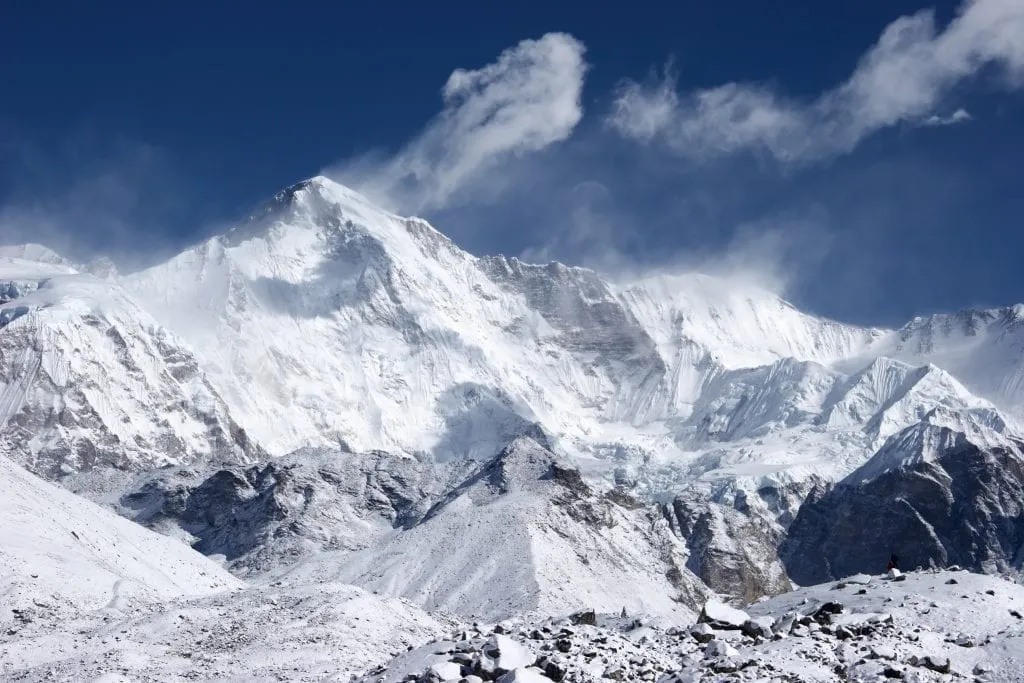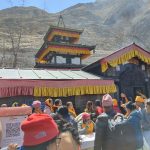Physical Address
304 North Cardinal St.
Dorchester Center, MA 02124

Mount Cho Oyu, whose name translates to “Turquoise Goddess” in Tibetan, standing at an impressive altitude of 8,188 meters (26,864 feet), is the sixth-highest mountain in the world. Located in the Himalayas, on the border between Nepal and Tibet, Cho Oyu is one of the most popular 8,000-meter peaks among climbers, thanks to its relatively straightforward route and lower technical difficulty compared to other giants like Mount Everest and K2. This article provides a detailed exploration of Mount Cho Oyu, covering its geography, climbing history, routes, and the unique challenges it presents.
Cho Oyu is geographically positioned on the border between Nepal and Tibet (China), with its northern side lying within the Tibetan Plateau and its southern face within Nepal’s Khumbu region. The mountain’s proximity to Everest and Lhotse adds to its allure, offering climbers spectacular views of these neighboring giants.
The name “Cho Oyu” reflects the mountain’s striking appearance, especially during certain times of the day when its snow-covered slopes take on a bluish hue under the sunlight, resembling the color of turquoise. The mountain’s gentle, rounded summit contrasts with the dramatic ridges and sharp peaks of many other Himalayan giants, contributing to its reputation as one of the more “approachable” 8,000-meter peaks.
Mount Cho Oyu’s climbing history is rich and storied, with the first successful ascent taking place in 1954. The mountain’s relatively easier routes have made it a popular choice for both experienced climbers and those new to extreme altitude mountaineering.
The first ascent of Cho Oyu was achieved on October 19, 1954, by an Austrian expedition led by Herbert Tichy, with team members Joseph Jöchler and Pasang Dawa Lama. This expedition is notable for being one of the earliest successes on an 8,000-meter peak without the use of supplemental oxygen, showcasing the mountain’s comparative accessibility.
Since the first ascent, Cho Oyu has become one of the most frequently climbed 8,000-meter peaks. The mountain’s popularity is due in part to its well-established routes and the fact that it is considered less dangerous than other 8,000-meter peaks, with lower risks of avalanches, icefalls, and crevasses.
The flora around Mount Cho Oyu includes rhododendrons, juniper, blue poppy, primulas, gentians, fir trees, mosses, and cushion plants.
The fauna of the region features the snow leopard, Himalayan tahr, musk deer, Himalayan blue sheep (bharal), pika, and various insects.
Bird species include the Himalayan monal, snow partridge, Himalayan griffon vulture, and blood pheasant.
Cho Oyu offers several climbing routes, but the most commonly used is the Northwest Ridge Route, which is considered the standard route to the summit. This route is favor for its relatively straightforward ascent, with few technical challenges compared to other 8,000-meter climbs.
While the Northwest Ridge Route is the most popular, Cho Oyu has other, less-traveled routes, such as the Southwest Face and Southeast Ridge. These routes are more technical and challenging, requiring advanced mountaineering skills and experience.
Pre-monsoon (spring) and the post-monsoon (autumn) season: The best time to climb Mount Cho Oyu is during this season from April to May and from September to October. These periods offer the most stable weather conditions, with clear skies and relatively mild temperatures. It is safer and more predictable climbing.
The monsoon season (June to August) brings heavy snowfall and increase avalanche risk.
the winter months (November to February) are characterize by extreme cold and strong winds, making climbing much more difficult and dangerous.
Climbing Cho Oyu requires extensive preparation and acclimatization to the high altitude. While the mountain is considered one of the “easier” 8,000-meter peaks, the altitude presents significant physiological challenges that should not be underestimated.
A well-planned acclimatization schedule is essential for a successful summit bid. Climbers typically spend several weeks on the mountain, gradually moving between base camps and higher camps to allow their bodies to adjust to the thinning air. Acclimatization climbs to intermediate camps and rest days at lower altitudes are crucial components of this process.
Climbers should be in excellent physical condition, with a strong cardiovascular system. They have the ability to carry heavy loads over long distances at high altitudes. Many climbers use Mount Cho Oyu as a stepping stone before attempting more technically challenging peaks like Everest.
As with all high-altitude expeditions, environmental conservation is a key concern on Cho Oyu. Climbers and expedition teams are encouraged to practice Leave No Trace principles, minimizing their impact on the fragile mountain environment.
One of the significant challenges on Cho Oyu, as with many popular climbing destinations, is waste management. Expeditions are required to bring down all waste, including human waste, to prevent environmental degradation. Some expedition teams employ the use of portable toilet systems and dedicated waste management strategies to address this issue.
For the local Sherpa and Tibetan communities, Cho Oyu holds deep cultural and spiritual significance. The mountain is revered as a sacred place, and climbers are encouraged to respect the local customs and traditions.
The Khumbu region on the Nepalese side and the Tibetan Plateau are home to Sherpa and Tibetan communities, respectively. These communities have a long history of guiding and supporting mountaineering expeditions, and their knowledge of the mountains is invaluable to climbers.
Climbing Mount Cho Oyu is a profound experience that challenges not only the body but also the mind. The journey to the summit is mark by moments of awe, fatigue, exhilaration, and contemplation. The mountain’s relative accessibility makes it a popular choice for climbers looking to push their limits and experience the majesty of the Himalayas.
Reaching the summit of Cho Oyu is a moment of immense personal achievement. From the top, climbers are reward with panoramic views of the surrounding peaks, including Everest, Lhotse, Makalu, and Shishapangma. The sense of standing at one of the highest points on Earth is both humbling and exhilarating.
Mount Cho Oyu, with its stunning beauty, rich cultural significance, and challenging yet accessible climbing routes, is a true gem of the Himalayas. Whether you are an experienced mountaineer seeking to summit another 8,000-meter peak or a first-time climber looking to test your limits, Cho Oyu offers a rewarding and unforgettable adventure. As you embark on this journey, remember to respect the environment, honor local traditions, and appreciate the extraordinary experience of standing on the “Turquoise Goddess” of the Himalayas.



